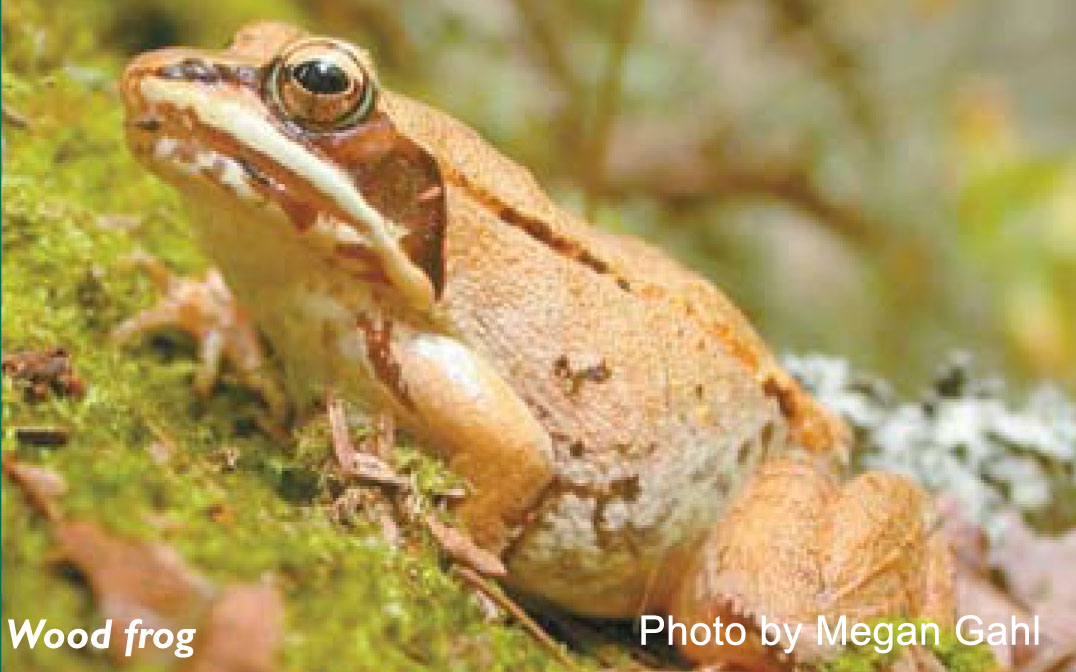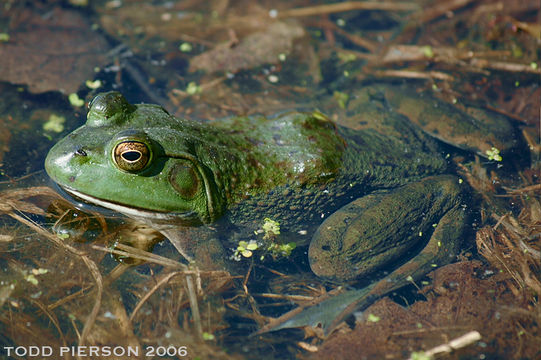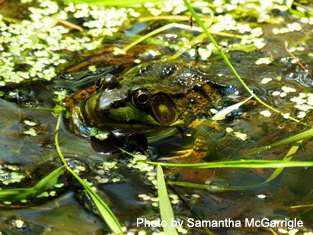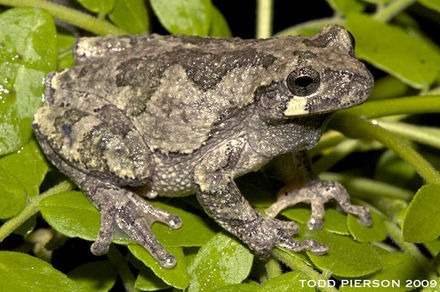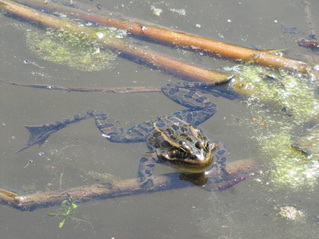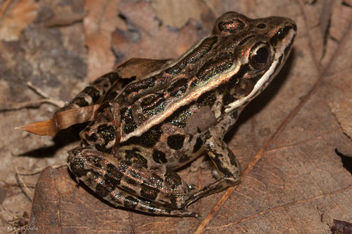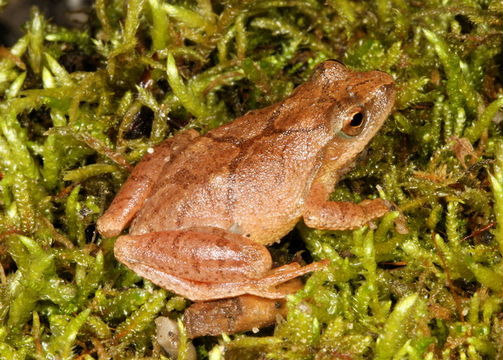Samantha McGarrigle, Undergraduate Research Assistant, University of Maine and Carly Eakin, Graduate Researcher, University of Maine
Brrr-uuum. Brrr-uuum. Peep peep peep peep! Gu-duk, gu-duk, gu-duk.
Ahh… The sounds of frog breeding calls are an essential part of nature’s summer “soundtrack”, but have you ever wondered about which frogs make which sounds and how these frogs might interact? While these sounds may have an aesthetic value, they can also indicate wildlife action under the water.
In the Northeastern U.S., some of the more sensitive species of amphibians – frogs and salamanders – breed in vernal pools to avoid predation. These temporary to semi-permanent bodies of water lack fish which would eat amphibians. However, these three species are not the only amphibians to use these pools. Other frog and salamander species use these pools can prey upon or compete with Wood Frog (Rana sylvatica), Spotted Salamander (Ambystoma maculatum), and Blue Spotted Salamander (Ambystoma laterale) larvae.
Depending on the species of frogs present in a wetland can help determine the success of more sensitive species, like wood frog and spotted salamander larvae. There are seven species of frogs that are found in and around vernal pools in the greater Bangor, Maine area: Gray Treefrog (Wood Frog, American Bullfrog, Northern Green Frog, Northern Leopard Frog, Northern Pickerel Frog, and Spring Peeper. Each species has unique characteristics which can be used to identify them. See if you can find some of these species this year in your local wetlands and vernal pools!
Wood Frogs are an indicator species for vernal pools, and the number of their egg masses can lead to a pool being designated as “significant” for conservation in Maine. These frogs can quickly be identified by their “white lipstick” – a white line that goes all the way around their mouth – and the dark ‘mask’ showing just behind their eyes. Wood frogs can have a variety of colorations: copper brown, gray, reddish brown, tan, and everything in between. Their coloration helps them camouflage with their surroundings, usually, the forest floor.
American Bullfrogs (Lithobates catesbeiana) and Northern Green Frogs (Lithobates clamitans melanota) are very similar in coloration and are generally the two largest frog species in many pools. Both come in green to brown coloration, but Green Frogs have a whiter belly while American Bullfrogs have a yellow belly. Another way to tell them apart is that Green Frogs have ridges from just behind the eye down the back of the frog, while Bullfrogs do not have ridges down their backs. Both of these species of tadpoles can overwinter in pools and are predators of smaller tadpoles of other frog species.
Gray Treefrogs (Hyla versicolor) may make a guest appearance on your window (or other vertical surfaces) in the summer, but these sticky-footed frogs also can breed in vernal pools. Treefrogs are colorful from the time they are relatively young; tadpoles can develop red-tipped tails and adults are found in a variety of colors, ranging from light green to gray to dark brown, changing to match their surroundings. They also have a white spot present below each eye and their belly is white as well. Males have yellow markings on their legs, while females have drabber, olive-gray colored legs.
Northern Leopard Frogs (Lithobates Pipiens) and Northern Pickerel Frogs (Lithobates palustris) are also very similar in coloration and spot patterns. Pickerel Frogs are gray or brown and have dark brown or black blotches. Leopard Frogs are green or brown and have dark round spots on the back with a lighter colored border. The one way to tell difference between Leopard and Pickerel Frogs is the shape of the spots on the back of the frog; Leopard Frog spots are a bit rounder than those on Pickerel Frogs.
Lastly, Spring Peepers (Pseudacris crucifer) are those frogs whose high-pitched, early spring, ‘peep!’-ing chorus can sometimes be almost deafening near wetlands. These tiny frogs – adults are typically around one-inch (2.5 cm) in body length – may be yellow, gray, brown, or olive in color, but all have a characteristic ‘X’ on their backs.
Other Resources
<http://www.umaine.edu/vernalpools/PDFs/Vernal%20Pools%20%20Milestones%20and%20Misconceptions.pdf>
Bibliography:
Burne, M.R., and Griffin C.R. 2005. Habitat associations of pool-breeding amphibians in eastern Massachusetts, USA. Wetlands Ecology and Management 13, 3: 247-259.
Encyclopedia of Life
Gray Treefrog [http://eol.org/pages/331209/details]
Wood Frog [http://eol.org/pages/331212/details]
American Bullfrog [http://eol.org/pages/330963/details]
Green Frog [http://eol.org/pages/1298706/details]
Leopard Frog [http://eol.org/pages/1019093/details]
Pickerel Frog [http://eol.org/pages/331210/details]
Spring Peeper [http://eol.org/pages/1048371/details]
Hunter, M. L., Calhoun, A. J. K., and McCollough, M. 1999. Maine Amphibians and Reptiles. University of Maine Press, Orono, ME. pp. 252.
Lawler S.P., Dritz, D., Strange T., and Holyoak M. 1999. Effects of Introduced Mosquitofish and Bullfrogs on the Threatened California Red-Legged Frog. Conservation Biology 13, 3: 613-622.
Semlitsch, R.D. and Skelly D.K. 2007. Ecology and Conservation of Pool-Breeding Amphibians. In: Science and conservation of vernal pools in northeastern North America. CRC Press, Boca Raton: 127-147.

